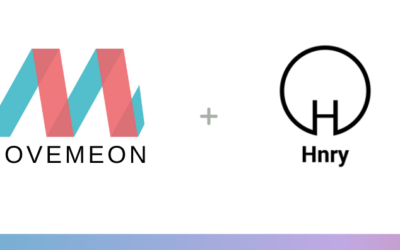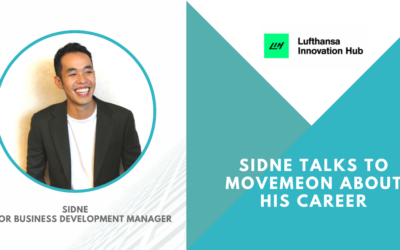The Allbright Academy (spearheaded by two of the UK’s most prominent businesswomen, the AllBright Academy teaches female business leaders how to build and grow their own ventures) recently got in touch to ask us to create 2 ‘how to’ videos: the first on when and how to hire and the second on how to create a great team culture. If you’re interested in hiring find out more by contacting us here. Rich (one of our Founders) took the plunge in front of the camera and here’s a summary of what he covered on hiring, including some links to other helpful content. If you’re after his write up on culture, you can find that here.
WHY ME?
For a summary on recruitment, I’m perhaps an odd choice. I don’t have a recruitment or HR background. In fact, movemeon was established to disrupt traditional recruitment. My perspective is one of a Founder of a growing tech business – learnings from growing our own team embellished with our experience partnering 100s of start-ups and global companies. So here’s a step by step list of things to think about as you consider hiring a new employee.
WHEN TO MAKE YOUR FIRST HIRE
There’s a tricky balance to strike here. Don’t hire for the sake of it. But avoid hiring so late that your growth slows down. In a nutshell, hire when you can foresee a lack of skills or capacity that would slow down your growth. And you have the funding to pay their wages!
Before that, put in the very hard yards yourself (as doing more yourself & developing your own skills takes less time in the early stages than hiring & managing others). Your first hire is going to differ depending on the type of business you have. But if you always hire to drive growth, your first hire is going to be filling the gap that is slowing you the most at the time.
Here is some more detailed advice on hiring and engaging top talent – once you make that successful hire.
PERMANENT VS PART-TIME VS FREELANCE VS OUTSOURCE VS INTERNS
All too often Founders default to hiring full time, permanent employees. But that’s the most costly (both in terms of time and money) type of team member you can have (see the write up on culture vis what it takes to create & retain a high performing team).
Start by sketching out a basic organisational structure (i.e, what teams you foresee). Then go through and determine which would genuinely benefit from being full-time employees and which could be part-time/freelance or an intern. Equally, consider outsourcing tasks. This is particularly good for admin, research, finance, simple web development, etc. Some things are better and cheaper done by 3rd parties, either at home or overseas. – For an insight into the increasing quality of freelancers, take a look at this article.– See why we predict a further increase in the use of freelancers in this article.
CREATING A JOB DESCRIPTION
This sounds simple but isn’t, mainly because most of the job descriptions you’ll have experienced in the past (particularly if they were with big companies) are poorly written. The key is to put yourself in your candidate’s shoes. A great job description entices people to apply. It’s a piece of marketing (picture things you buy and the marketing campaigns behind them). It starts with a compelling job title & one-line overview. And is followed by a one-paragraph ‘best bits’ summary and then the detail. The main things people miss are:
- you and your current team (the most common reason people enjoy their work is that they like the people they work with);
- the vision for your business (most Founders talk too much about historical achievements, funds raised, etc, and not enough about the future – which is the part that this employee will contribute to);
- the nice to haves vs the must-haves (be strict – if you make a massively long list of must-haves, it will rule too many people out. Better to speak with a wider audience and screen people out early in the interview process if needed).
– We describe how to write a great job description here.
– In this article, we outline why candidate experience matters.
WHERE TO ADVERTISE
Obviously, this very much depends on the role and on your budget. The fact is that very early-stage businesses can’t spend on advertisement. So you may want to focus on free publicity. Here are some channels that we’ve used:
- University careers sites (great for junior hires at grad/intern/1st job move level),
- Angelist/Work in startups (and other free start-up focused sites),
- personal networks,
- social media (your own and your company’s),
- ask for a free trial.
If you are paying to advertise, favour sites where you pay only on results rather than upfront – be that a % of fee only if you hire (in which case it’s only a small incremental cost on top of the total cost of employing & massive ROI if that employee proves instrumental in your growth). For instance, movemeon has a success fee model of 15% of basic salary (which is about half the cost of a traditional recruiter focused on strategic/commercial hires). If you are going the agency route, make sure you read this article on working with recruitment agencies.
Interested in hiring? Get in touch today
INTERVIEW PROCESS
Our golden rule is that it’s better to do a 15-minute video call with 10-15 candidates than decide on 4-5 candidates to meet in person purely on the basis of the paper. Experience shows that very rarely do your favourites ‘on paper’ remain the front-runners after an initial chat.Be clear from the start as to what your interview process will involve. Our interview process is 4 stages:
- video chat (30 mins max);
- in-person interview (1 hour);
- case study interview (2 hours and involving them talking you through their thoughts to a problem you’ve sent them in advance;
- social setting – lunch, meet the team etc;
- throughout this, we always give feedback as to why someone isn’t progressing to the next round (and it’s almost always appreciated).
Lastly, make sure you set aside enough time to get through the process quickly. The best candidates always have irons in the fire and we’ve witnessed so many companies miss out because they have been too slow to complete their interviews and the candidate has taken another job in the meantime. And if you need this person ASAP, don’t forget that they’ll probably have a notice period too (typically at least 1 month but up to 6+ for senior hires). All told, the average process for a permanent hire takes ~4 months from going to market to the candidate starting (clearly the process is far quicker for freelance hires or graduates/others who don’t have a notice period).– For the importance of phone/video interviews & how to make them successful for recruitment, read this article. – For a more detailed account of what we learnt from recruiting for movemeon, click here.
GETTING AN OFFER ACCEPTED
If you are clear from the start as to what your budget is, you are much more likely to have an offer accepted. Our data shows that you are 400% more likely to hire first time round if you specify the ballpark compensation in the job description. Never finish your first round (in our case, the video chat) without establishing a candidate’s expectations and current earnings. There’s no point trying to hire someone you can’t afford and it’s a hugely frustrating waste of time if you only work that out at the end of the process.
In order to entice senior hires, you may need to create a share options scheme. More junior hires tend to value basic salary, bonus and perks more. Ideally link bonus very clearly to company and personal performance; clearly rewarding those who smash it out of the park. If you don’t have loads of cash, don’t worry. Start-ups are very popular so you should be able to factor that into what you have to pay. Also, employees value perks and a thoughtful environment as much as they value pay. So be very conscious about putting all of these in place (holidays, flexible working, pension, snacks, team drinks, team away time, etc, etc). At movemeon, we go on a yearly company holiday. We described its benefits for business performance and morale here.
Last but not least, be able to talk about progression. If the business continues to grow and this person performs well, what could their role (and team) look like a year or two down the line? And how might their compensation shift?– We took a closer look at the best holiday allowances here.– Here we outline the benefits of flexible working.
CONTRACTING
Make sure that you have a robust employment contract and be mindful of appendices designed to offer you and your business necessary protection if someone leaves (e.g, confidentiality, restrictive covenants vis joining setting up a competitive business). There are plenty of inexpensive disruptive law firms focused on start-ups. And also platforms that will look after your HR tasks (contracts, staff handbook, payroll, pension, etc) as well as your accounting tasks and statutory returns.
ONBOARDING
When a new team member joins, you need them to be as impactful as possible as quickly as possible. This takes more thought than you first realise. So think through:
- what they and you can sort in advance (useful background reading, PAYE admin, IT equipment, system set up);
- plan for week 1 (a combination of introductory sessions and learning through doing).
When you’re doing this thinking, try to construct and codify a process that you can repeat for all new joiners. That way you’re not having to reinvent the wheel every time and can have some template emails and documents saved.
At Movemeon, we connect (ex) consultants and freelancers with tailored job opportunities, industry insight & events. Register now to view and apply to jobs and for networking and events.


